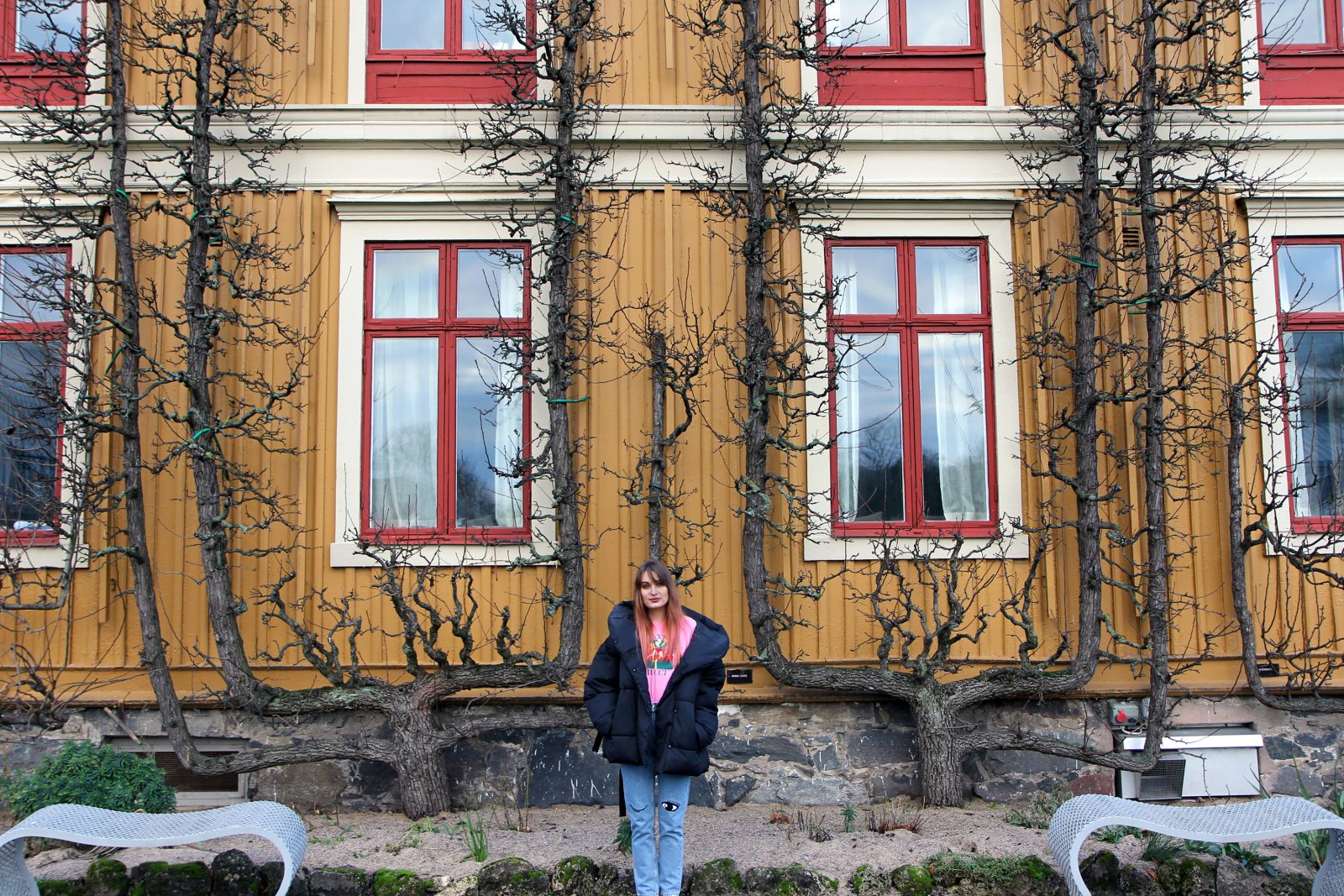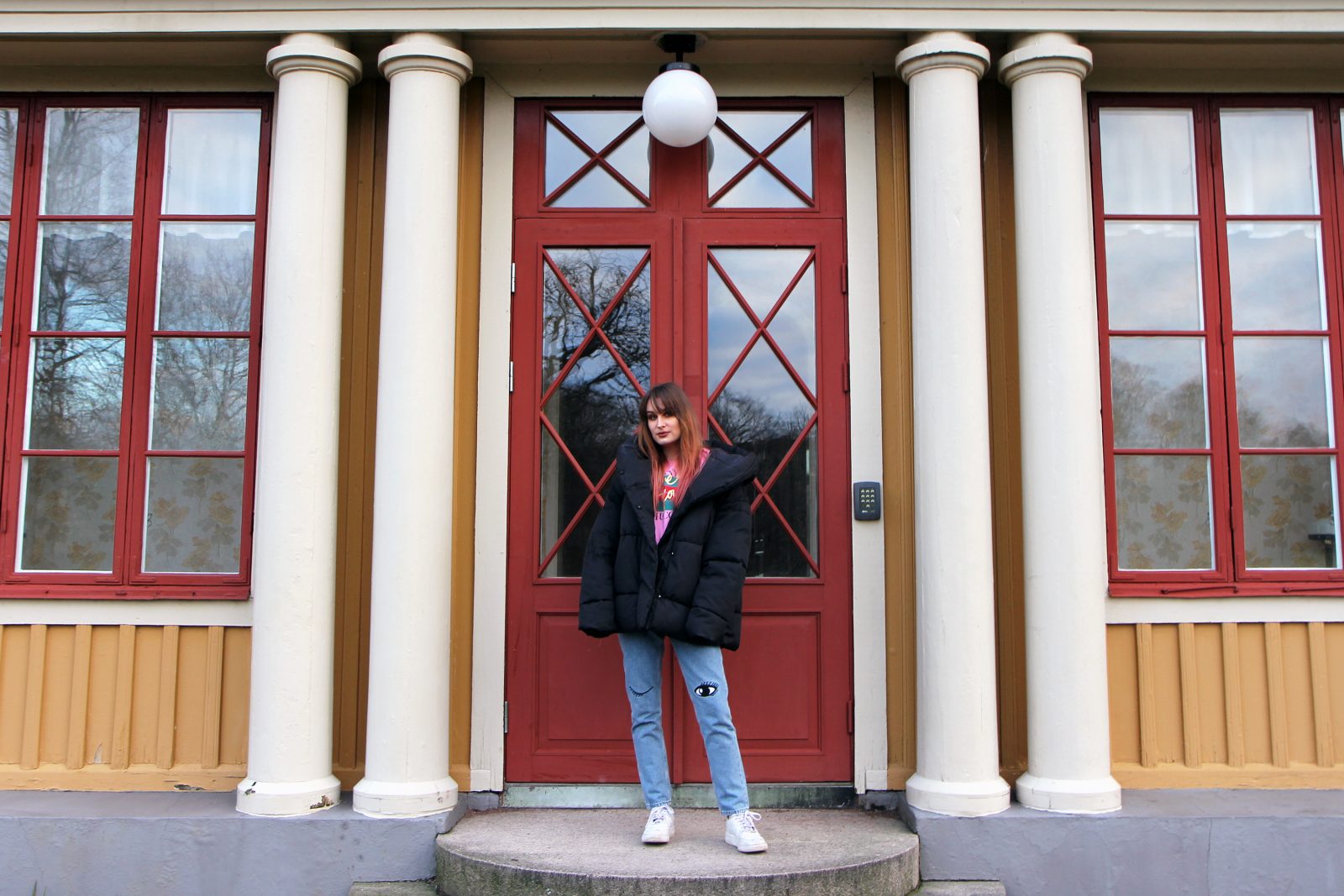There’s a huge disparity between a Scandinavian winter and a California summer.
However, the work of Swedish artist Hanna KL is born of both. LA based artist and musician Nik Ewing caught up with Hanna KL in Sweden where they spoke about the romance of Los Angeles, the community of Instagram and a mutual love for Google Street View.
Nik: How did you get started?
Hanna: I grew up with artist parents. Art was always there. After high school I studied design in Växjö in the middle of southern Sweden. It’s a rather small town surrounded by forest. The winters are real cold and dark. So I was trapped in a city that didn’t feel like home for three years, going through this thing called Winter Depression which is very common in Scandinavia. I would be very depressed and I needed something to do to not just sit in my apartment. It was an escape for me to make art with the plants I had in my tiny apartment but that grow on the streets in California. I also started watching Keeping Up with the Kardashians and I was like “wow Los Angeles is beautiful.” I never thought about that before. I continued to watch it just to see LA and then started watching other things set in LA, obviously there’s a lot.
N: There’s an amazing film called Los Angeles Plays Itself made up solely through scenes of LA from films. It’s kind of like watching a documentary of LA change geographically and historically over time but just through clips of movies. Obviously there’s so much footage to dig through.
H: You can probably see a huge difference because everything has changed there so fast. There was nothing like 100 years ago and now there’s everything. It makes me happy to see LA and California. I started going on Google Maps on Street View and it was just like walking around Santa Monica or Palm Springs.
N: There’s an Instagram account solely made up of beautiful screenshots from Google Maps Street View. There’s beautiful found moments, gorgeous landscapes and accidental art of people cut in half from the endless panorama stitched together. Everybody can see the entire world through this tool, like how you were digitally walking the streets of California.
H: When I visited LA I was like “shit, I’ve been here and here… and here!” It’s almost like I could guide people ’cause I’ve already walked there on the internet.

N: All your artwork feels very California. I’m from Southern California so it instantly felt familiar.
H: It makes me very happy to hear that from a native.
N: How do you think your environment affects your work? You were actually just in LA, did that make you feel like you wanted to make Swedish inspired art?
H: No I just got really, really inspired. It’s easier to make art that’s LA inspired now that I’ve seen it. But I think environment affects art a lot. I wasn’t able to get a lot done before I had this obsession with California because nothing here in Sweden really inspired me. Gothenburg is OK, but Växjö wasn’t inspiring. The art scene was non-existent.
N: I view Swedish art falling into two sides of an extreme spectrum. On one side there’s darkness from black metal to monochromatic somber paintings and on the other side there’s brightness like pop music and hyper-colored fashion. It’s odd how environment can affect what you make, like “I’ll make what I see” or “I’m tired of what I see so I’m going to make the opposite of that.”
H: In general there are different colors in LA than Sweden. It’s like you’re viewing the world through a filter which I think is really cool but in LA it’s probably just smog or something.
N: My visual work isn’t LA inspired at all, its stark, minimal, monochromatic – kind of the antithesis of LA. Maybe there’s a shared thread of wanting to create something other than the environment we are in, being over what we’re surrounded by. I’ve seen enough sun, which is a very privileged thing to say to you.
H: What are you inspired by?
N: Minimalism and dead space. Beauty in starkness and imperfections. At least when I think of my personal work, but musically my band is very California.
H: I can see Scandinavian influence in your collages.
N: We’ve traded places. Is there a time period in LA that you’re specifically drawn to?
H: I’d love to be in LA during the late ’80s/early ’90s, that’s my dream. When I was in Venice Beach I was just looking at the people wishing it was 1986.
N: I’m from San Diego and everyone down there hates LA. So as a kid in the ’90s LA was already tainted by everyone saying “that place is the worst.” I did grow up in Southern California though so I saw all that culture, like surfers using the word “rad” too much and bright colored clothes at the beach.
H: I’m jealous that you got to be there. In LA it seems like everyone is connected to art and design.
N: It’s funny how our perspectives interpret the same world differently. I think Sweden has a great sense of design in architecture, tech, graphic design, etc. Even walking around I find the posters/advertisements much more awesome than those in LA. Maybe that’s just because I’m tired of the fonts and layouts I regularly see.
H: Yeah and I’m the opposite. Sweden is great at design like obviously with IKEA, but maybe you romanticize it because you’re not from here.
N: What’s your process?
H: I take pictures of everything. I use color combinations and make patterns from shapes in architecture I find in my photos. I find inspiration from others’ photography and online, like from Pinterest.
N: Some artists rep where they’re from super hard, taking a pride in heritage, but your work centers around LA and you find inspiration online. Do you find community there?
H: I don’t have a community in my city. It’s just online. People in Sweden don’t do what I do and don’t like what I like. I’ve never had a Swedish client, I’ve almost only had American clients. I talk to a lot of people on Instagram and made friends there that I wouldn’t make here. We keep up with each other’s work.
N: Twenty years ago you couldn’t do that unless you were literally mailing pieces of art across the world everyday. It enables communities that couldn’t have existed before. Before you’d just be like “no one around me likes what I make.” It’s a bizarre time or as Drake would say, “what a time to be alive.”
H: That’d be very sad if the internet didn’t exist. We’re very lucky. Instagram has made the artist world closer.
N: Even on an inspirational level. I’ve been drawn to art my whole life but as a kid my worldview was only what I could literally see and hear around me. I remember finding music online, discovering other artists that my parents didn’t listen to like “oh there’s this entire other world out there” but I didn’t have the tools to discover them on my own in the mid ’90s.
H: I guess there was television but you still couldn’t pick whatever you wanted to see, but now it’s endless.
N: What advice would you give to up-and-coming artists?
H: Find your own thing and do it. I see so many things constantly that when I finally see something very expressive, it catches my eye and gets attention. Do something that is unique of course, which is hard, but do your own thing. Find something that makes you happy and take inspiration from it. You want to like what you do and be happy that you’re doing it.
N: Becoming a factory of work is kind of sad if you don’t like what you do. Just making it to make it.
H: Which is what a lot of designers have to do, which is sad, but I get it ’cause that’s what the world looks like.
N: Especially in the design world, your living is more likely to come from client work.
H: I studied sustainable development. I’m very torn between creating stuff that doesn’t affect the world vs having to make money. It’s very difficult. I think about it constantly. I’m still very young, so maybe when I’m older I’ll think about that more and have more power to make decisions about how my work is produced.

N: Maybe that’s an eternal conflict: weighing responsibilities we have as humans to take care of the world vs needing to make or sell something, even as artists, to survive in society. It might be on paper, wasteful, but it’s very important for culture and inspiration.
H: The best thing to do as a graphic designer is take on projects that allows you to educate and encourage better behaviors, as well as giving sustainable development a visual expression. That’s how you design with a sustainable perspective rather than just making more stuff for a commercialization society.
N: That feels like more of a Swedish perspective that wouldn’t be as prominent in the American consciousness. Here in Sweden the recycling is broken down into like 18 separate categories.
H: I was so surprised in the US there is just garbage and recycling. Like metal, plastic and paper all together?! Who is going to sort that all out later? I think we’re good at that here in Sweden.
Comments